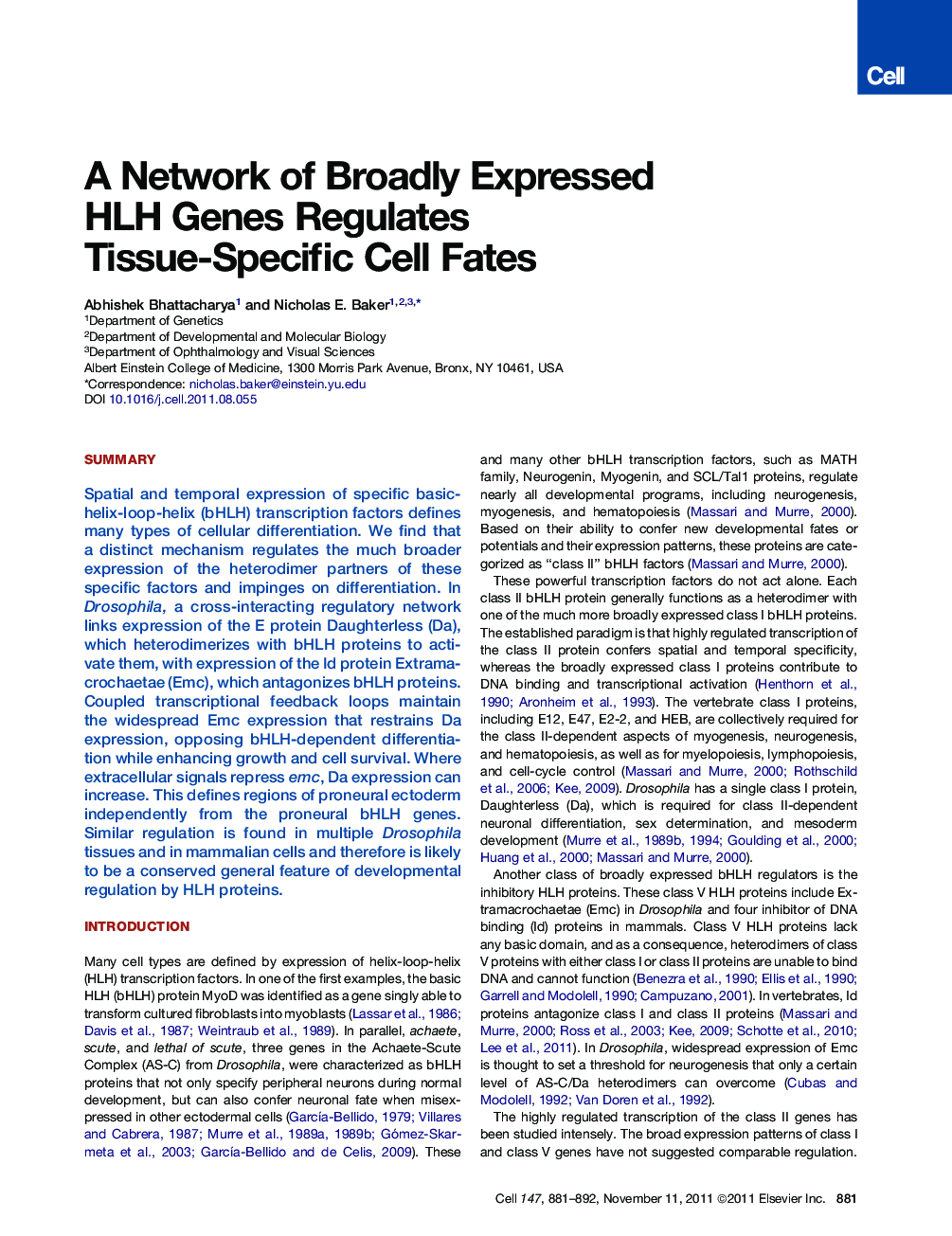| کد مقاله | کد نشریه | سال انتشار | مقاله انگلیسی | نسخه تمام متن |
|---|---|---|---|---|
| 2035729 | 1072214 | 2011 | 12 صفحه PDF | دانلود رایگان |

SummarySpatial and temporal expression of specific basic-helix-loop-helix (bHLH) transcription factors defines many types of cellular differentiation. We find that a distinct mechanism regulates the much broader expression of the heterodimer partners of these specific factors and impinges on differentiation. In Drosophila, a cross-interacting regulatory network links expression of the E protein Daughterless (Da), which heterodimerizes with bHLH proteins to activate them, with expression of the Id protein Extramacrochaetae (Emc), which antagonizes bHLH proteins. Coupled transcriptional feedback loops maintain the widespread Emc expression that restrains Da expression, opposing bHLH-dependent differentiation while enhancing growth and cell survival. Where extracellular signals repress emc, Da expression can increase. This defines regions of proneural ectoderm independently from the proneural bHLH genes. Similar regulation is found in multiple Drosophila tissues and in mammalian cells and therefore is likely to be a conserved general feature of developmental regulation by HLH proteins.
Graphical AbstractFigure optionsDownload high-quality image (392 K)Download as PowerPoint slideHighlights
► A mechanism for how HLH proteins control differentiation is uncovered
► E proteins regulate their own expression and their Id partners
► Repressing Id genes allows elevated E protein expression
► Regulated levels of E and Id proteins regulate differentiation competence
Journal: - Volume 147, Issue 4, 11 November 2011, Pages 881–892